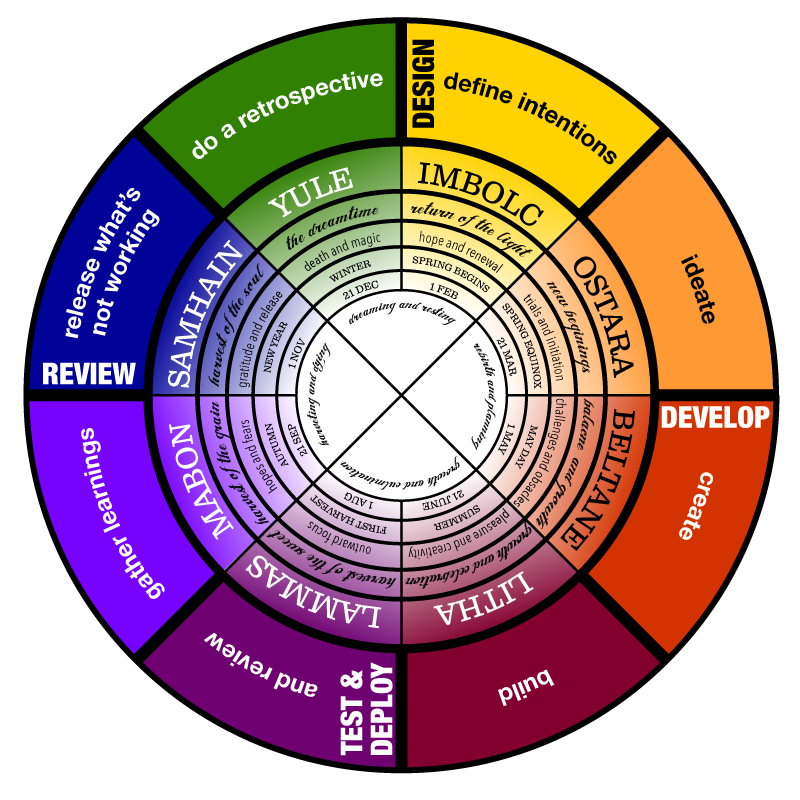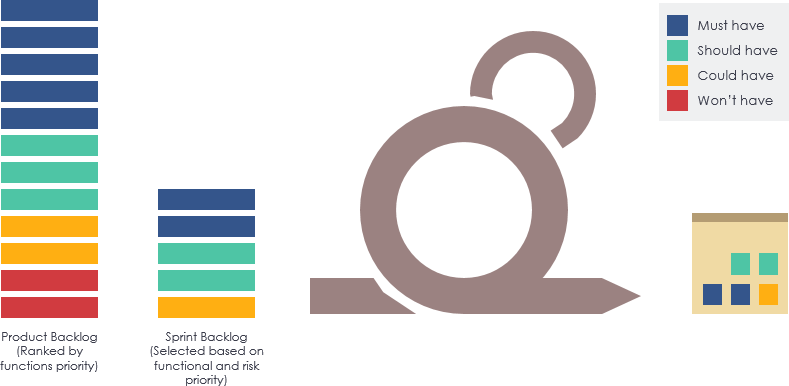Agile as a path to your life dreams
“How can I create big change in my life in a way that allows me to respond and deal with uncertainty?”
Agile is a software methodology created to focus on the people doing the work and how they work together. Solutions evolve through collaboration between self-organizing cross-functional teams utilizing the appropriate practices for their context. It is based on the ability to create and respond to change. It is a way of dealing with, and ultimately succeeding in, an uncertain and turbulent environment. In short, it’s a great foundation for effecting big personal change, with a few adaptations.
The world is dynamic and change is inevitable. No matter how long your transformation takes to realize, many aspects of your environment change along the way. Adopting an agile approach means cultivating a flexible outlook that adapts to the dynamic nature of life. It’s called “Agile” because of its ability to accommodate change.
My work is “Agile-inspired,” based on my years of experience in software companies as a user experience designer. I have adopted the tools and practices which I feel best fit with the process of human change and realizing dreams. I have layered Agile onto the Celtic Wheel of the Year to bring earth-based natural cycles into the mix:
This is a draft of my Agile/Wheel of the Year combined model
Agile is about thinking through how you can understand what’s going on in the environment that you’re in today, identify what uncertainty you’re facing, and figure out how you can adapt to that as you go along. When you face uncertainty, try something you think might work, get feedback, and adjust accordingly. Let your context guide which frameworks, practices, and techniques you use to collaborate where possible and move towards a future you want to live in.
Being agile means partitioning work into iterations that help break down big goals and desires into concrete steps, and being able to respond to situations and variables as they arise without getting derailed or without losing a sense of progress. Agile is flexible enough to permit adaptation to your very specific, personal reality.
Stages
Dreams (the backlog): A product backlog is a list of “features” that need to happen to realize the life dream during the “development process.” They need to be arranged in priority order. I tend to include higher-level goals here, not the down-in-the weeds tasks. This is a great place to try story mapping!
Sprint planning: Look at the backlog items with the highest priority and decide how many items can be accomplished during the next “sprint” (for personal development I suggest 6 weeks).
Weekly Check-in (scrum): Do a check-in with yourself once a week to see how you’re doing on progress. This can include journaling, post-it notes, and the insight of a trusted friend or accountability buddy. Try to not make it too heavy so that it becomes a chore. Find ways to celebrate progress to give yourself a dopamine hit--this helps forward momentum. Don’t shame yourself if you are not making as much progress as you think you should. Instead, note where you’re getting hung up and adjust your plan in the next sprint planning. Fear and anxiety can come up, which is very normal. Take note of these times and over time you will see a pattern that you can then work with in the future to build in extra support for yourself.
Sprint review: Once every six weeks, sit back and take account of the overall progress you’ve made and document it. This can be in the form of actual gold stars, highlighter, photos, drawings, or other ways of visually noting your achievements. Share with a trusted friend or your accountability buddy. Celebrate what you’ve done!
Sprint retrospective: Take note of the overall themes of where you got stuck or anxious, and make note of that in a caring way so that you can take it into account in the next sprint planning. What felt easy? Hard? Where were you too optimistic about time and resources? What was way easier than you thought? See if you can determine patterns that will help you plan better in future rounds.
In order to achieve big life dreams, they need to be broken down into tasks that feel like they can be accomplished, and then progress on the set of tasks in each sprint must be tracked regularly. Where you put your attention becomes your attention.
I’ll write more about this in a future post, but I find that sprints are the best way to focus attention and energy on true, incremental change. Otherwise, a scattershot approach is going to leave you feeling frazzled, ineffective, and overwhelmed.
Priortizing tasks using sprint planning and the MoSCoW Method
How do you decide what goes into a sprint? The MoSCoW method is one of the simplest methods to evaluate the relative importance of each task. The acronym stands for “Must, Should, Could, Won’t” and it can be used with story mapping.
Must: These features are mandatory. Neglect any of them and the current sprint most likely fails.
Should: Features here can be described as great to have, but not top priority. Simply put, they don’t have much impact on delivery success now, though eventually, they must be implemented.
Could: These are small-scale improvements that don’t take considerable resources, but they aren’t essential. Their absence won’t affect almost anything, or at least wouldn’t do any harm to the release.
Won’t: These items are of the lowest importance. They don’t match stakeholders’ current challenges, needs, and requirements. Thus, they may be easily omitted or rescheduled for future releases.
My favorite part of this system is “won’t have” because it allows me to keep stuff in the backlog and not focus on it. When my mind gets anxious, I can look and see the item captured for future attention… and I can relax and say “I don’t have to worry about that right now” and use my energy and brain space to take care of more pressing things.
A great example from my current life is that I need to immediately get some new work projects to bring in income. I also know that my housesitting gig will end in the middle of next month. Every time I think about housing, it takes over my entire attention and I get anxious.
However, my sprints are two weeks long at this time of great change (I usually recommend six weeks for longer-timeline change) and I have slated housing to be addressed three sprints out, at the beginning of next month. I have a couple of contingency plans that I can remember to help my nervous system calm down, and then I can go back to what’s needed sooner, which is income.
I’ll be writing a lot more about Agile and big life changes, and how I combine it with the Celtic Wheel of the Year to give it a grounded spiritual component. Stay tuned!


